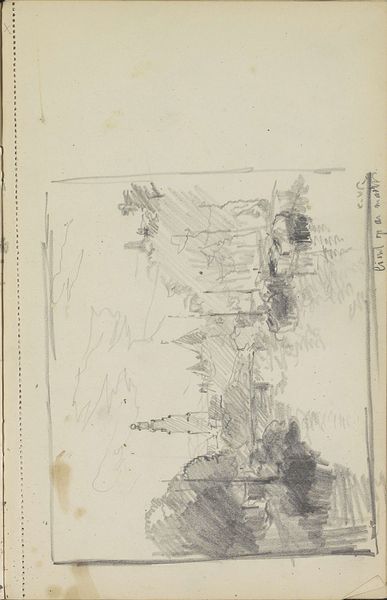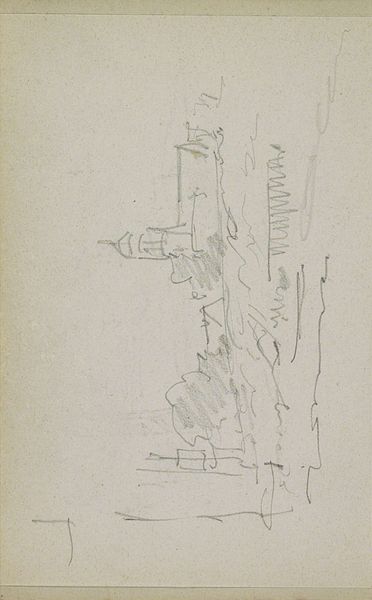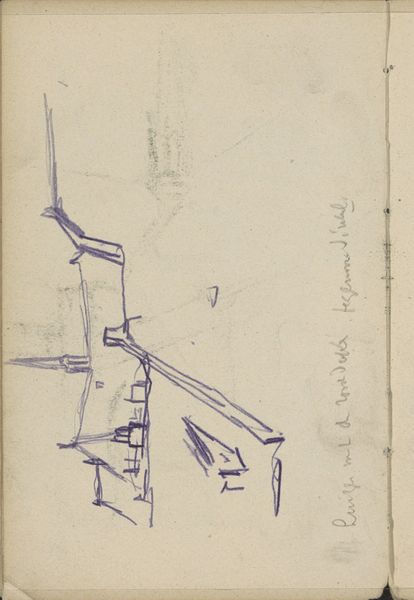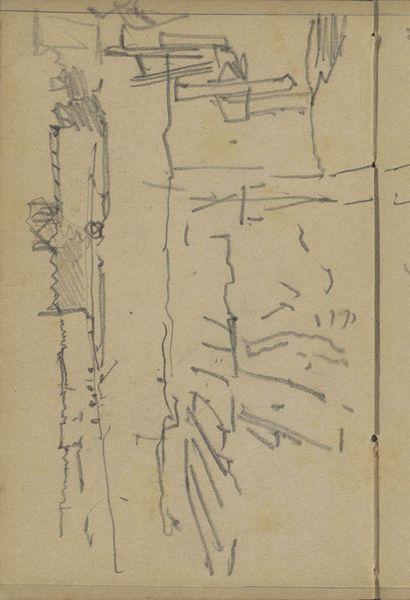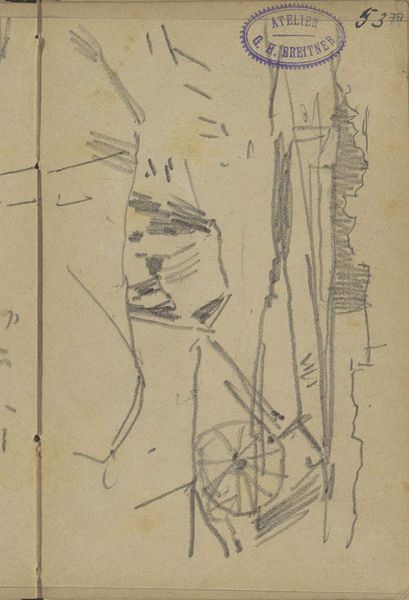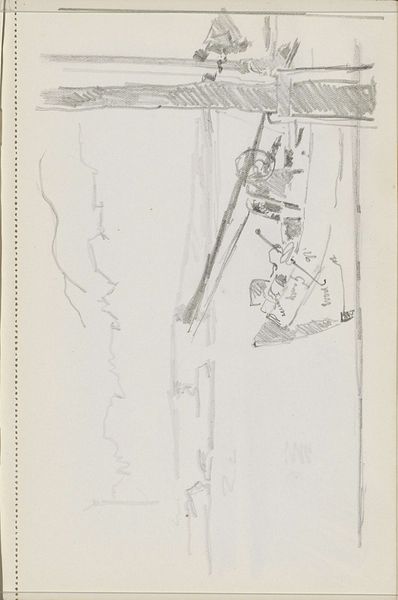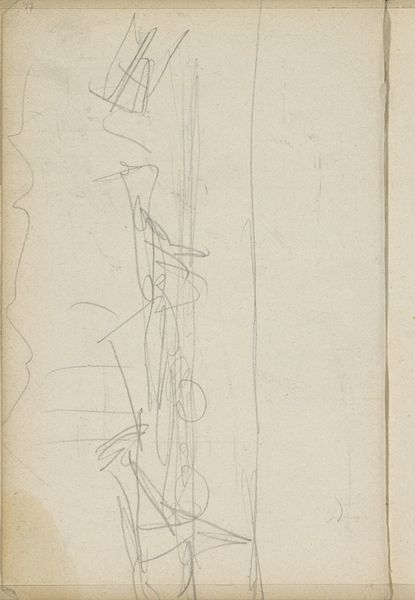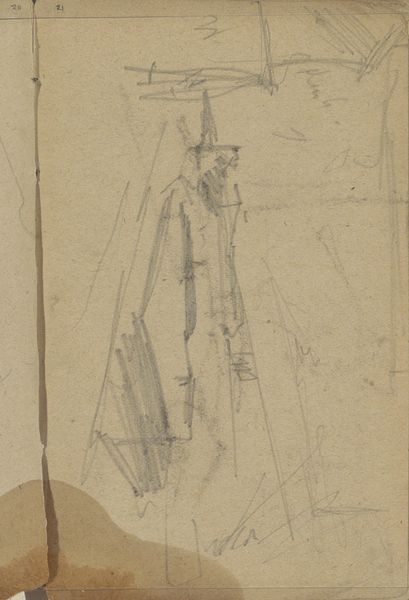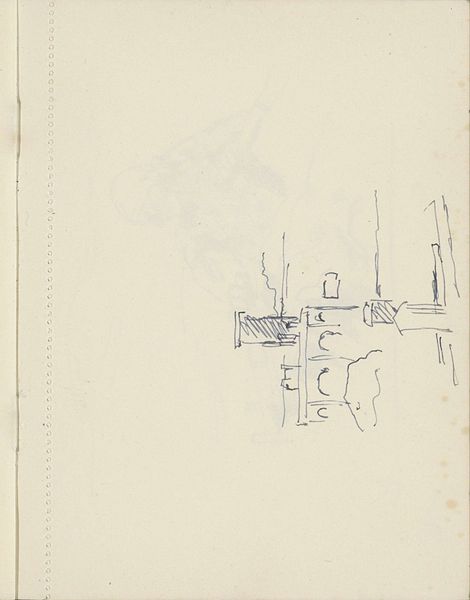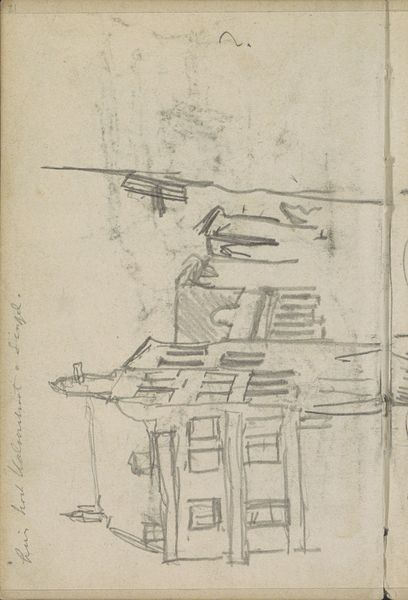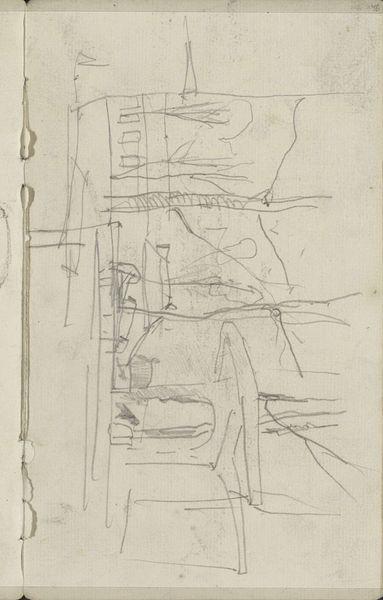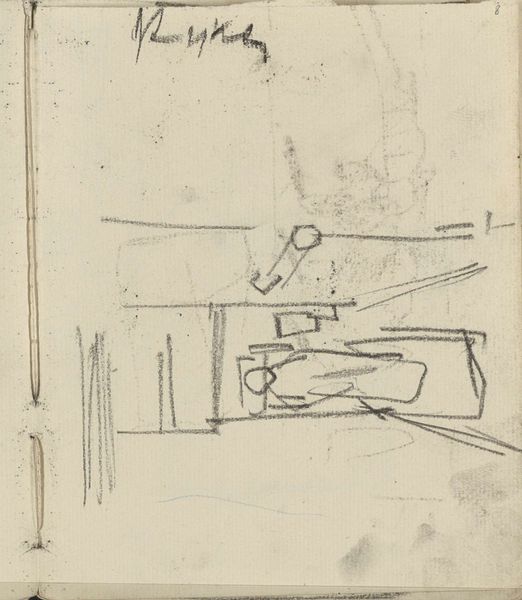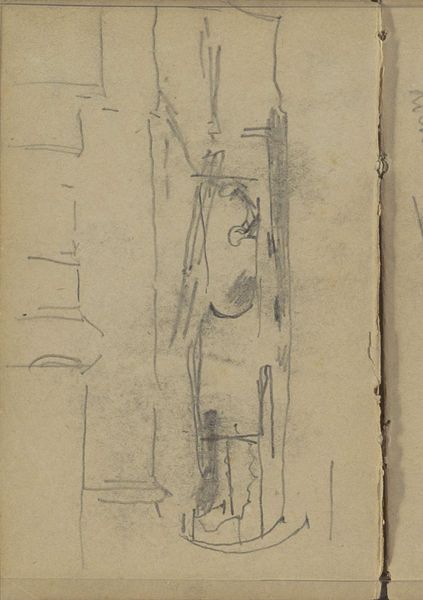
Copyright: Rijks Museum: Open Domain
Editor: Here we have "Daken in Amsterdam," a pencil drawing by George Hendrik Breitner, made sometime between 1900 and 1923. The sketch is simple but evokes a certain urban atmosphere, like a quick impression jotted down in a notebook. What catches your eye in this piece? Curator: I am intrigued by the raw immediacy afforded by the pencil medium, highlighting Breitner's process. Instead of focusing solely on aesthetic beauty, consider the labor and the conditions that birthed this cityscape. Was it commissioned, or a personal exploration? Was this cityscape one in a series that served to comment on urban life? Editor: That's an interesting point! I hadn’t thought about the context of its creation in that way. Does the use of a pencil, rather than paint or ink, impact the statement the artist is making? Curator: Absolutely. Pencil, being readily accessible and relatively inexpensive, implies a democratizing element to art-making. It detaches the cityscape from purely representational "high art". Were Breitner engaging with photography in parallel? The visible layers of the drawing suggest an iterative process and speak to how cities change through different regimes of planning and architecture and what remains is this single artifact and drawing Editor: So you see the material choice reflecting a change in society and perhaps Breitner's intentions? It feels almost like social commentary, then? Curator: Precisely! The accessibility and perceived disposability of a pencil sketch, like a fleeting urban moment, become quite profound when considering production costs and their relationship to artistic intent. Did Breitner employ assistants or studio hands to scale up these works to large paintings? What does this division of labour mean when the final paintings end up fetching large sums of money? Editor: I see what you mean. It reframes the work as more than just a simple drawing; it becomes a document of a specific time and set of social conditions. I'll definitely think about the means of production more when I look at art from now on. Curator: Exactly. And hopefully, question whose stories are privileged and amplified. It starts by analyzing how the materials have been gathered, assembled, and whose stories are represented or omitted.
Comments
No comments
Be the first to comment and join the conversation on the ultimate creative platform.
